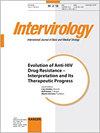An Outbreak of Human Parainfluenza Virus 3 (Phylogenetic Subcluster C5) Infection among Adults at a Residential Care Facility for the Disabled in Croatia, 2018
IF 1.8
4区 医学
Q3 VIROLOGY
引用次数: 2
Abstract
Introduction: Although highly pertinent for children, outbreaks of human parainfluenza virus (HPIV) may cause up to 15% of all respiratory illnesses in adults and predispose them to serious adverse outcomes, with HPIV serotype 3 (HPIV3) being the most common. This study represents the first report of an HPIV3 outbreak among adults at a long-term health-care facility in Croatia. Methods: A retrospective study was conducted to investigate an outbreak of acute respiratory infection (ARI) at a single residential care facility for the disabled in Croatia. Demographic, epidemiological, and clinical data were collected for all residents, while hospitalized patients were appraised in detail by laboratory/radiological methods. Multiplex PCR for respiratory viruses and sequencing was performed. Partial HPIV3 HN 581 nt sequences were aligned with HPIV3 sequences from the GenBank database to conduct a phylogenetic analysis, where different bioinformatic approaches were employed. Results: In late June 2018, 5 of the 10 units at the facility were affected by the outbreak. Among the 106 residents, 23 (21.7%) developed ARI, and 6 (26.1%) of them were hospitalized. HPIV3 was identified in 18 (73%) of the residents and 5 (83%) of the hospitalized individuals. Isolated HPIV3 strains were classified within the phylogenetic subcluster C5 but grouped on 2 separate branches of the phylogenetic tree. During the entire outbreak period, none of the institution’s employees reported symptoms of ARI. Conclusions: Our study has shown that this health care-associated outbreak of HPIV3 infection could have been linked to multiple importation events. Preventive measures in curbing such incidents should be enforced vigorously.2018年克罗地亚残疾人寄宿护理机构成人感染人类副流感病毒3(系统发育亚群C5)暴发
引言:尽管与儿童高度相关,但人类副流感病毒(HPIV)的爆发可能导致高达15%的成人呼吸道疾病,并使他们容易出现严重的不良后果,其中HPIV血清型3(HPIV3)最为常见。这项研究是克罗地亚一家长期医疗机构首次在成年人中爆发HPIV3的报告。方法:进行一项回顾性研究,调查克罗地亚一家残疾人寄宿护理机构爆发的急性呼吸道感染(ARI)。收集了所有住院患者的人口统计学、流行病学和临床数据,同时通过实验室/放射学方法对住院患者进行了详细评估。对呼吸道病毒进行多重聚合酶链式反应并测序。将部分HPIV3 HN 581 nt序列与GenBank数据库中的HPIV3序列比对,以进行系统发育分析,其中使用了不同的生物信息学方法。结果:2018年6月下旬,该设施的10个单元中有5个受到疫情影响。在106名居民中,23人(21.7%)出现ARI,其中6人(26.1%)住院治疗。HPIV3在18名(73%)居民和5名(83%)住院患者中被发现。分离的HPIV3菌株被分类在系统发育亚簇C5中,但被分在系统发育树的两个独立分支上。在整个疫情爆发期间,该机构的员工都没有报告ARI症状。结论:我们的研究表明,这种与医疗保健相关的HPIV3感染爆发可能与多个输入事件有关。应大力执行遏制此类事件的预防措施。
本文章由计算机程序翻译,如有差异,请以英文原文为准。
求助全文
约1分钟内获得全文
求助全文
来源期刊

Intervirology
医学-病毒学
CiteScore
5.40
自引率
0.00%
发文量
13
审稿时长
6-12 weeks
期刊介绍:
''Intervirology'' covers progress in both basic and clinical virus research, and aims to provide a forum for the various disciplines within virology. Issues publishing original papers alternate with thematic issues, focusing on clearly defined topics. This thematic concentration serves to make timely reviews, research reports and controversy easily accessible to both specialists in the field and those who want to keep track of the latest developments outside their own area of interest. In addition to original papers, regular issues publish short communications and letters to the editor to provide readers with a forum for the exchange of ideas and comments. The scope encompasses work on the molecular biology of human and animal viruses, including genome organization and regulation, and the structure and function of viral proteins. The pathogenesis, immunology, diagnosis, epidemiology, prophylaxis and therapy of viral diseases are considered.
 求助内容:
求助内容: 应助结果提醒方式:
应助结果提醒方式:


